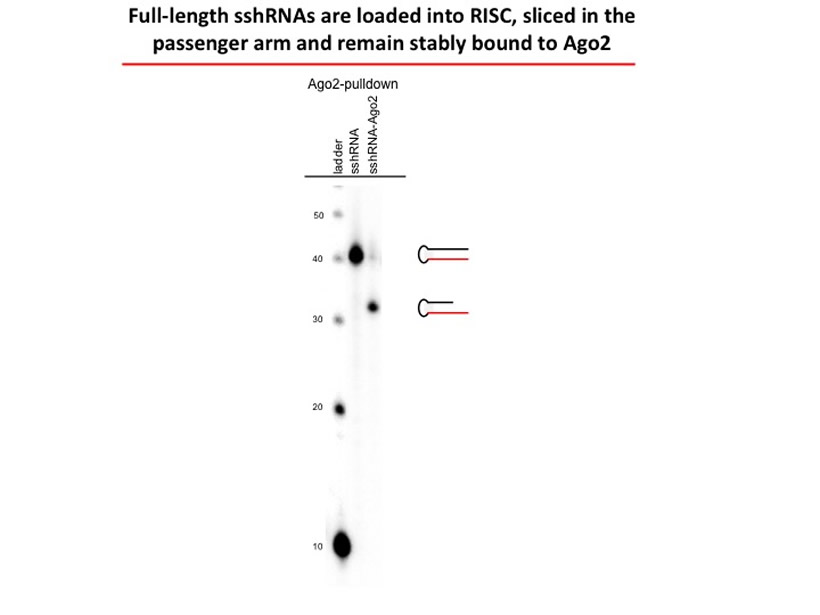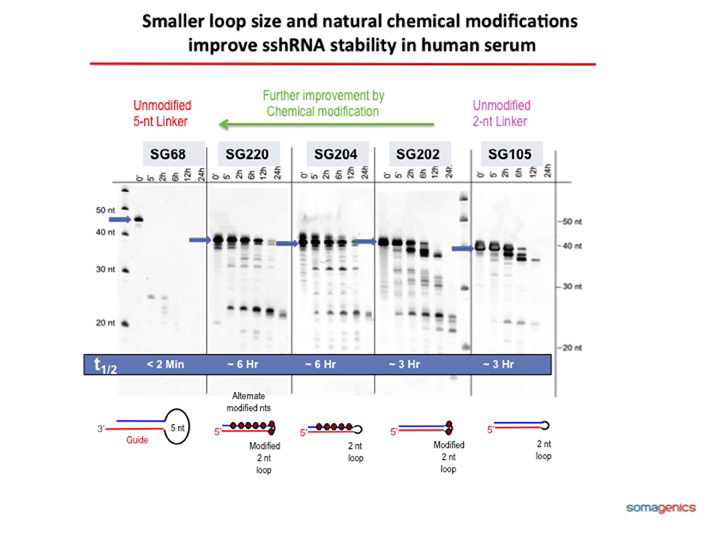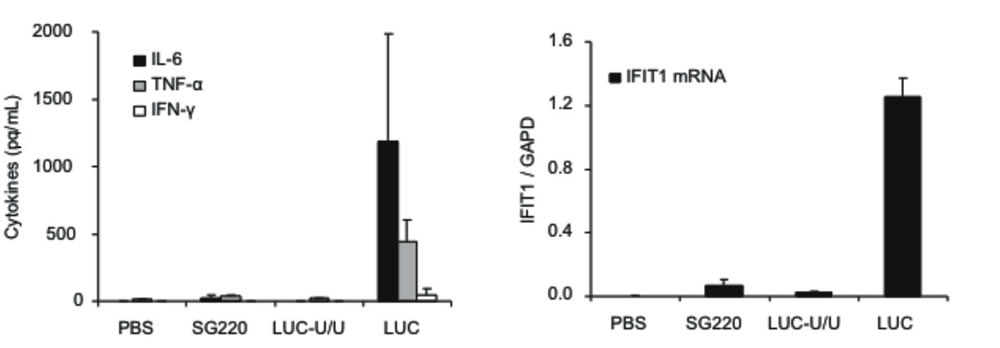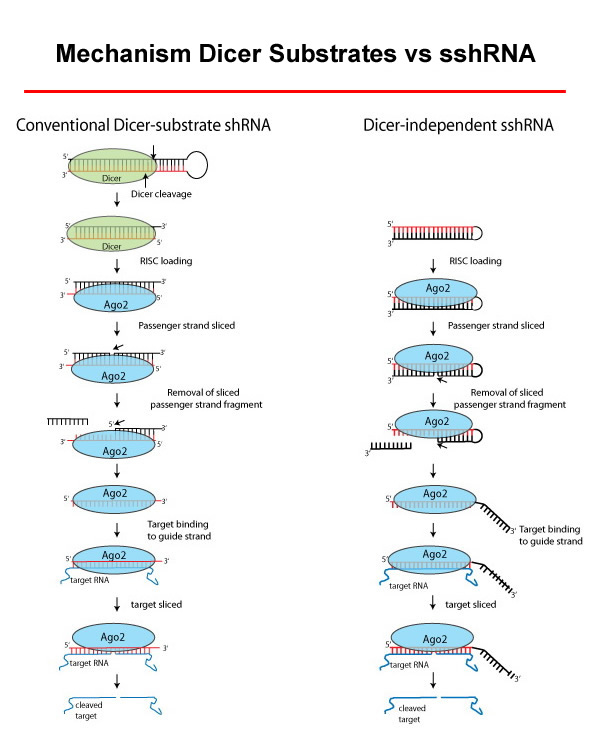Somagenics’ synthetic short hairpin RNA (sshRNAs) can be highly potent RNAi effectors with activities similar to or more potent than the more commonly used siRNAs targeting the same sequences.
Advantages of siRNA | Advantages of shRNA |
|---|
| Standard method | Single chemical entity |
| Heavily researched | Simplified production, purification and formulation |
| Many products on the market | More potent in some cases (Siolas 2004, Ge 2010 ) |
| | Reduced off-target sense-strand activities |
| | Minimal competitive interference with endogenous miRNAs (Ma and Wu, 2014) |
Differing from more commonly used RNAi triggers, sshRNAs are too short to be Dicer substrates (Figure 1). The guide sequences of the sshRNAs are stably bound to Ago2 and loaded into the RISC complex, which then guides cleavage of the target sequence (Figure 2).
Figure1: Proposed mechanisms of Dicer-independent processing by Ago2 of sshRNAs. SshRNAs are loaded directly into RISC without prior cleavage of the loop. The guide arm becomes available for target pairing after passenger-arm slicing by Ago2 (or Ago1, not shown). Red lines are guide sequence; black lines, passenger sequence; and blue lines, target RNA. Not drawn to scale.

Figure 2: 5’-end-labeled sshRNAs show Ago2-associated bands consistent with cleavage at the passenger-strand slicer site. Denaturing PAGE analysis of full-length sshRNA(SG225) and RNA that co-immunoprecipitated with Ago2 (SG224–Ago). The length of SG224-Ago RNA is consistent with cleavage of the passenger arm at the slicer site. RNA levels cannot be compared between Ago2-associated and unbound fractions because the latter includes excess starting material and less of it was sampled in the measurement. (click image to enlarge)
A natural analogue to synthetic shRNAs is the microRNA miR-451 that matures without loop cleavage.
Because miR-451 does not compete with endogenous miRNAs, this structure has been suggested as a model to generate shRNAs
Optimization of Somagenics’s sshRNAs
Loop size and 2’ OMe Modifications of sshRNAs Improve Serum Stability

Figure 3: Improvement of sshRNA stability by chemical modification. Introduction of smaller loops and natural chemical modifications of the passenger strand improve stability in 10% human serum, as shown in this denaturing polyacrylamide gel. Blue arrows indicate full-length sshRNAs. (click image to enlarge)
2’ OMe Modifications of sshRNAs reduce Immune Stimulatory Effects

Figure 4: The same chemical modification pattern essentially eliminates immune stimulatory tendencies in human MRC-5 cells. Twenty nmol/l sshRNAs SG220 or or an equivalent amount of positive control (polyI:C) were transfected into cells in triplicate. Untransfected (N/A) cells and cells transfected with Lipofectamine 2000 alone (Lipo2K) served as negative controls. The numbers shown are the mean and standard deviations of the mean of the indicated cytokine mRNAs relative to the untransfected control and normalized to GAPDH. This experiment was conducted in collaboration with Tekmira Pharmaceuticals, Burnaby, British Columbia, Canada. (click image to enlarge)

Figure 5: In vivo experiments confirm low immunostimulatory activity by chemically modified sshRNAs. CD1 ICR mice were administered 2.5 mg/kg LNP-formulated sshRNA (SG220) or negative (N/A and lipo2K) and positive (polyl:C) controls by intravenous injection. After 4 hours, blood cytokine (left panel) and liver IFIT1 mRNA levels (right panel) were determined. The values shown are mean and standard deviation of measurements from each group of four mice. This experiment was conducted in collaboration with Tekmira Pharmaceuticals, Burnaby, British Columbia, Canada. (click image to enlarge)




